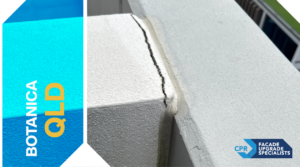One of the most common signs of building damage is the appearance of cracks in walls, ceilings, or foundations. These cracks can vary in size and direction, but large or expanding cracks typically indicate significant structural issues. Additionally, doors and windows that suddenly become difficult to open or close may signal foundation movement or structural shifts.
Preservation of a building is crucial to have safety and functionality of the building and also to have added value to the property. In this case, the early detection of building damage will help to avoid the development of small problems into major works. When the signs of damage are detected early, the property owners are in a position to rectify the situation before it gets to the worst stage where it will require a lot of work to be done. This guide focuses on the need for early diagnosis, signs of building ailment, and ways of preventing ailment in buildings.
Understanding the Importance of Early Detection
It is always advisable to identify the building damages at the initial stage to prevent further and more severe damages in future. This is important in that it allows the owners to address the issues at a youthful stage so that they may not worsen and compromise the structure. Here are key reasons why early detection is essential:
- Cost Savings
The fact is quite well known that the expense incurred for solving issues that are identified early is significantly low. Small damages normally cost less than big damages that would need intensive renovation to repair the advanced damage as defined above. Maintenance costs can be cut since problems are detected early hence they do not escalate to the extent that they have to be expensively fixed.
- Safety
This is because if the structural problems are identified on time, we can avoid accidents such as those that can affect people in the structure. It is also effective to repair anything wrong with the foundation such as a crack or leak because this is also hazardous and can lead to an accident that may harm people.
- Maintaining Property Value
Speaking of more specific strategies, care for the house and its timely repairs are helpful when it comes to maintaining and, in some cases, even increasing the value of the property. This is relevant since the buildings are more attractive to possible buyers or tenants and aid in protecting the worth of the investment.
- Avoiding Disruptions
This is why major repairs can be rather disruptive in the day-to-day running especially where the building in question is a commercial one. It is however relevant to note that most of the damages may be detected at this stage and this will enable the management to have them addressed instantly thus minimizing the level of interference with business activities in the building.
- Compliance with Regulations
Most of the local building codes and regulations have provisions for routine inspection and maintenance to prevent hazards and to conform to the set standards. By identifying these problems at their early stages, one can be in a position to avoid cases of violation of these regulations, legal suits, and even shutdown due to non-compliance.
How to Identify Early Signs of Building Damage
It is very important to notice any signs of damage to the building’s exterior as this will help in preserving the structure & safety of the construction. Do regular Inspection from time to time so that you can discover any problem at its preliminary stage. Here are some key signs to watch for in both residential & commercial building repairs:
- Cracks in Walls and Ceilings
One needs to watch out for any signs of cracks that may be developing on the walls and ceilings. It is possible that small thin lines are not much of a problem but wider cracks particularly those that are stair-step or horizontal are signs of major structural problems that require building remedial work.
- Water Stains and Leaks
This may include checking for water stains on ceilings and walls as these may be indicative of roof or plumbing leakage. This if left to continue will cause the formation of molds and other building maintenance problems associated with the damp spots. It is easy to locate the source of the leak and fix it before a lot of water damage is caused.
- Peeling Paint or Wallpaper
Pay attention to the paint or wallpaper that begins to peel or bubble. This can be an indication of dampness within the wall which may be a result of water leakage or high humidity. These problems, if not treated as and when they occur through regular building maintenance can worsen.
- Sagging Floors or Ceilings
If there are any signs of cracks, bowing or any other signs of sagging in the floors or ceilings, then there could be structural issues. These could be since joists have been compromised or there is an issue with the foundations of the commercial building and this would require some commercial building repairs.
- Doors and Windows
If it is hard to open or close doors and windows, then this means there has been a shifting of the foundation or structural changes. If these elements do not fit into their frames appropriately, then it might be a sign that other problems need the services of building contractors.
- Unusual Noises
Be cautious of any abnormal sounds that one might hear such as squeaking, snapping or cracking. Although there are times when noises are expected, if there is continuous or very loud noise, it may be a sign of stress or settling of structures and should be checked by an expert.
Therefore, if you are keen on your property, you should ensure that you inspect for these signs frequently and also engage in building maintenance to prevent expensive commercial building repairs in the future.
Preventative Maintenance Tips
It is important to note that the regular use of preventative maintenance will ensure that a building has a longer life and fewer building repair costs. The maintenance check schedules are important as they help you to detect any problems early enough and this keeps your property in its best state. Here are some essential preventative maintenance tips:
- Regular Inspections
Make routine inspections of the inside and the outside of your building. The professional inspections should be conducted at least once a year while the visual checks can be done more often and the goal is to identify any signs of damage. These inspections are very essential for the proper maintenance of buildings and they should be conducted periodically.
- Maintain Gutters and Downspouts
Check that all gutters and downspouts are clear to allow water to drain in the right manner. Any blockage of these gutters may lead to water overflow which may lead to damage to the roofs and foundations. Such problems can be avoided and the occurrence of commercial building repairs averted through routine cleaning and maintenance.
- Seal Cracks and Gaps
Ensure that the building is checked for any cracks or openings in the external walls and seal them properly. This also helps check instances where water gets into the building, conserves energy and also limits pest intrusion into the building. The cracks are among the areas that need to be inspected and sealed during building maintenance to avoid the penetration of various weather conditions into the building.
- Ensure Proper Ventilation
Ventilation also assists in regulating the amount of moisture that is in the building to avoid the formation of moulds and other moisture-related problems. Make sure that the areas with high levels of humidity such as the washrooms, and the kitchen among others are well-ventilated. This can be done through the use and proper functioning of exhaust fans and proper ventilation.
- Service HVAC Systems
Schedule maintenance of HVAC equipment and systems to keep them in good working condition. Good maintenance of the HVAC systems enhances the quality of the air indoors and also reduces cases of moisture. This is one of the key aspects of building maintenance that helps in creating comfort and bringing down energy bills.
By implementing these preventative maintenance tips, property owners can protect their buildings from damage, extend their lifespan, and avoid costly building repairs. Regular building maintenance not only preserves the property’s value but also ensures a safe and comfortable environment for occupants.
Frequently Asked Questions
How to tell if there is structural damage?
Look for expanding cracks in walls, ceilings, or foundations, and doors or windows that don’t fit properly. Sagging floors or ceilings, and new noises like creaking or popping can also indicate structural issues.
What is evidence of structural damage?
Signs include stair-step cracks in bricks, horizontal foundation cracks, damp walls, uneven floors, and cracks around windows or doors indicating structural shifts.
How do you know if a building is weak?
A building is weak if it has extensive cracks, misaligned doors/windows, persistent dampness, mould, or changes in shape and makes loud noises during use.
What is the major cause of damage to a building?
Water damage is the main cause, leading to issues like bowing, rotting wood, and mould. Other causes include improper building techniques, soil settlement, earthquakes, and floods.






